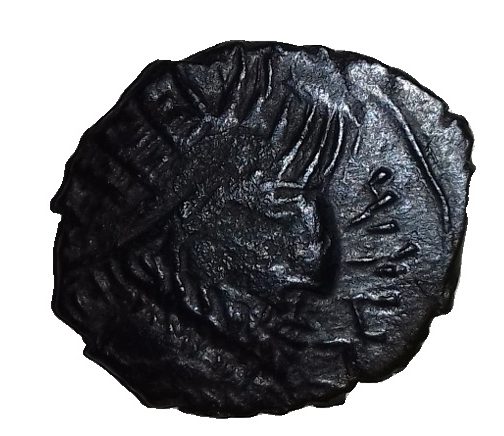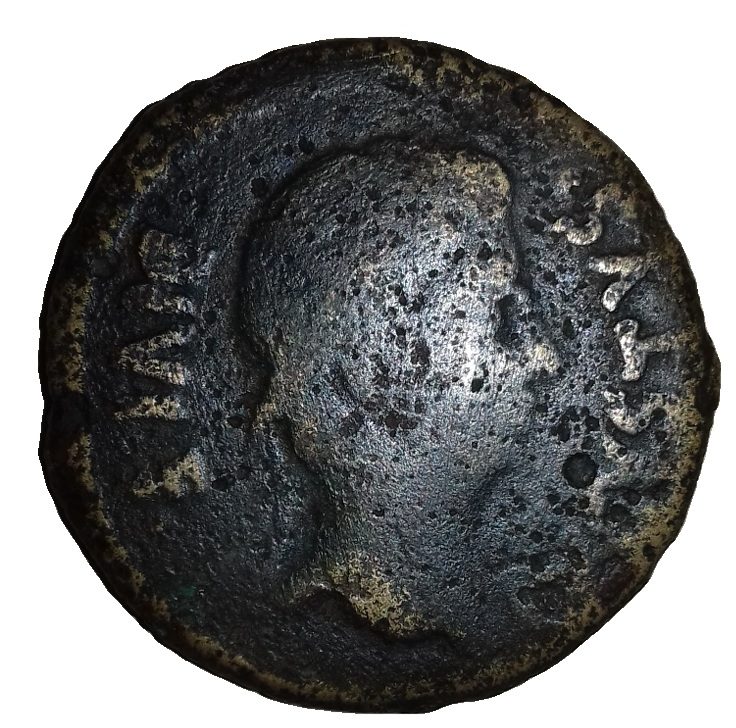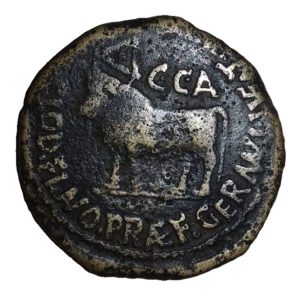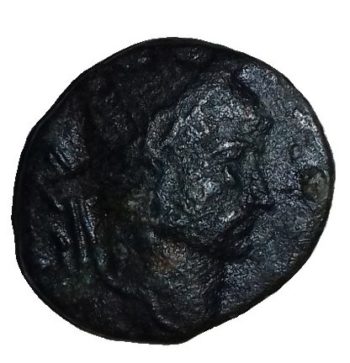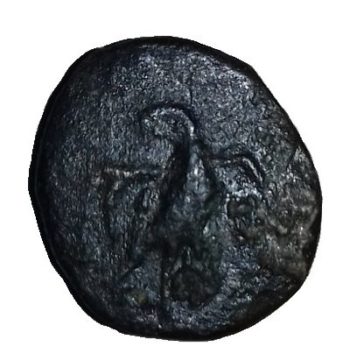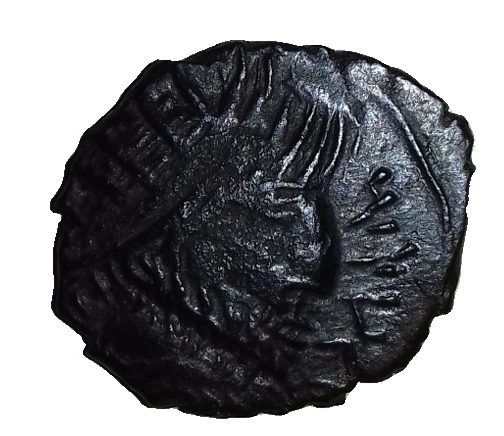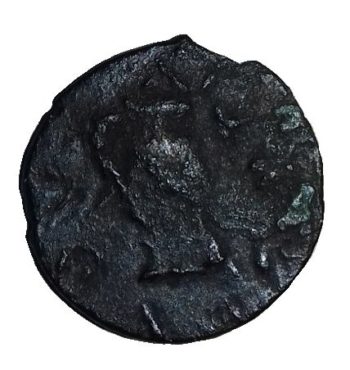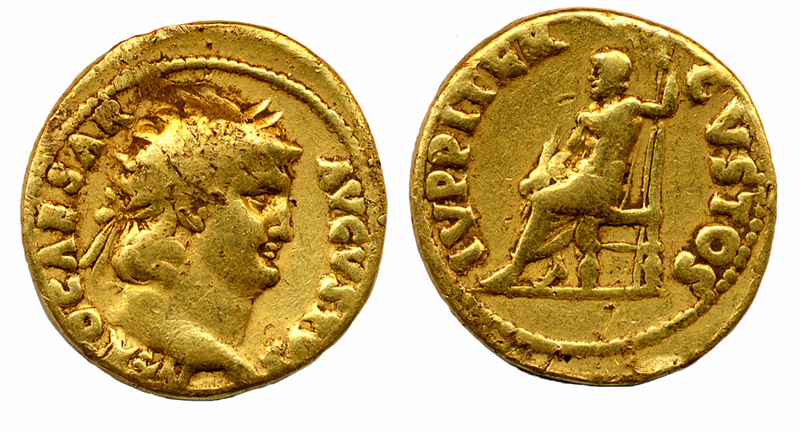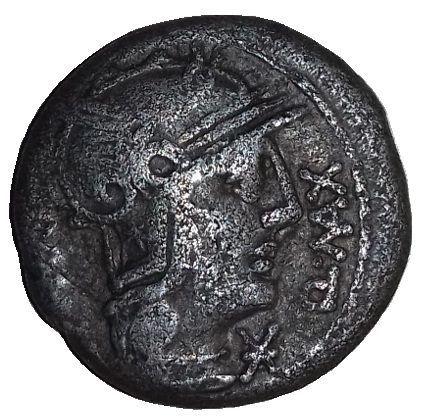Hi everyone, how are you? Today we are going to take a look at the barbarian Roman coins. So I will tell you in this article about four barbarian Roman coins, each minted under a different emperor. For each case, I will briefly introduce you to the Emperor’s life appearing on the coin as well as the details of the coin. Now let’s get to the heart of the matter and enjoy reading.
What is a barbarian roman coin ?
First of all, some of you may not know what I mean by ” barbarian roman coin “. So I will define it for you. By this I am talking about all Roman coins that were made outside of the Roman monetary system. As a result, they were not legal tender but were however often used as “normal” coin. These coins were as their name suggests “barbarians”. They were therefore struck by peoples from outside the Roman Empire. Hence the name “barbarian” which meant “foreign” at that time.
First barbarian Roman coin: the as of Augustus
This first barbarian coin is an ace of Augustus. Augustus was part of the Julio-Claudian dynasty and was the first emperor to reign. He ruled from -27 to 14 after succeeding his adoptive father Julius Caesar. His successor was one of his adopted sons, Tiberius. During his reign, Augustus put several actions in place. Indeed, he is at the origin of the Roman Empire and the rallying of Egypt, Dalmatia, Pannonia, Norique, Rhetia, Africa, Germania and Hispania. to the Empire and allowed the Empire to stabilize. In addition, he was responsible for the construction and rehabilitation of many buildings in Rome, he had many Roman roads built, permanently established the army and created a system of police and firefighters in Rome. . He died in 14 AD probably naturally.
This barbaric coin therefore weighs 10.69 grams for 27 mm in diameter. On its obverse, we can see the bust of Augustus surrounded by the captions “DIVI F AGVTVS” (Divin Son Augustus). On its reverse, we can see a bull with a triangle on its horns and “CCA” (colony of Caesar Augustus) above its back. The bull is surrounded by the captions “(CLOD) *.
FLAVO.PRAEF.GERMAN * […]” (…,… prefect of Germania). This barbaric coin therefore weighs 10.69 grams for 27 mm in diameter. On its obverse, we can see the bust of Augustus surrounded by the captions “DIVI F AGVTVS” (Divin Son Augustus). On its reverse, we can see a bull with a triangle on its horns and “CCA” (colony of Caesar Augustus) above its back. The bull is surrounded by the captions “(CLOD) *. FLAVO.PRAEF.GERMAN * […]” (…,… prefect of Germania). This coin is a colonial coin made here for the city of Zaragoza in Spain. Regarding its legend, unfortunately I did not manage to fully identify it or translate it correctly. Besides, if you have any idea, don’t hesitate to tell me in the comments area.
This coin was therefore a barbaric coin, here in Spain. It is recognizable thanks to the style. In particular with the relatively “soft” aspect of Augustus.
Second barbarian Roman coin: the minimi of Claudius II the Gothic
This second barbarian coin is a minimi of Claudius II the Gothic. Claude II was born in 214 AD and died in 270 AD. He ruled from 268 to 270 AD, succeeding Gallien and having Quintille as his successor. He therefore reigned for two years, which is relatively short. During his reign, he is seen as a soldier emperor, preferring war to peace. As a result, in AD 269, he beats Alamans at Lake Garda. Subsequently, he defeated the Goths in the Balkans and thus acquired his nickname “the Gothic”. Also, following tensions with the Roman Empire of Gaul, he rallied Lyonnais Gaul and Spain to him. It was then, in AD 270, that Claudius II died of the plague in Sirmium. His rise to power, which was likely to become very important, therefore came to an abrupt end.
This Roman coin weighs 1.12 grams for 12 mm in diameter. On its obverse, we can see the bust of Claudius II the Gothic, surrounded by the captions “[DIVO C] LVD [IO]” (Divine Claudius ”. On the reverse, we can see an eagle standing, with the captions“ [CONSECRATIO] “(Consecration). This coin was therefore struck following the death of Claudius II the Gothic, as can be seen with the eagle and the legends. Also, we can assume that this minimi was struck after 270 AD, or after the death of the emperor.
Third barbarian Roman coin: the minimi of Tétricus I
This third barbarian coin is a minimi of Tétricus I. Tétricus I is a Gallic emperor about whom we know very little. He reigned from 271 AD to 274 AD. Here, his reign for three years, it is therefore rather short. During this, he was notably Consul on three occasions and also tried to regularize the political situation of Roman Gaul. It was in 274 AD that his reign ended following his arrest by Aurélien. As to what happened afterwards, two hypotheses remain. He was reportedly either executed or pardoned and then released.
This barbarian coin weighs 1.60 grams and measures 15 mm in diameter. On its obverse, we can see the “degenerate” bust of Tétricus I, surrounded by also “degenerate” legends. The reverse is similar in style to the obverse with what appears to be a soldier holding a shield in his right hand and a spear in his left hand. Here too, legends appear but remain unreadable.
This coin is therefore the perfect example of “barbaric coin”. Indeed, the “degenerate” style is typical of these coins with many features like inscriptions.
Fourth barbarian Roman coin: the minimi of Tétricus II
This fourth barbaric coin is also a minimum here. However, this is Emperor Tétricus II. Tétricus II was the son of the previous Emperor and ruled the Empire with him. Here too, little information is given to us about him. He was “Caesar” from 272/3 to 274 AD. He therefore remained in power for one to two years. Which is like his father and Claude II, very brief. It seems that he stayed and accompanied his father throughout his reign. In the same way, he certainly died executed or pardoned then released by Aurélien.
This barbarian coin weighs 0.80 grams for 14mm in diameter. On its obverse, we can see the “degenerate” bust of Tétricus II, surrounded by also “degenerate” legends. As for the reverse, it is the same type as the obverse. However, on this one, we can see a vase surrounded by illegible legends.
This coin is also a very good example of barbaric imitation. However, the “degenerate” style is less pronounced here than on the third coin. Which makes her less stereotypical.
There you go, this article is now complete. Hope you liked it and discovered new things. Also, feel free to tell me in the comments space what topic you would like me to cover for a future article. As regards this one, it will relate to “5 Roman copper coins”. See you next week !
* the legend being partially worn at this place, I am not sure of my interpretation.
Receive my free book Around the Roman Coin by clicking here

